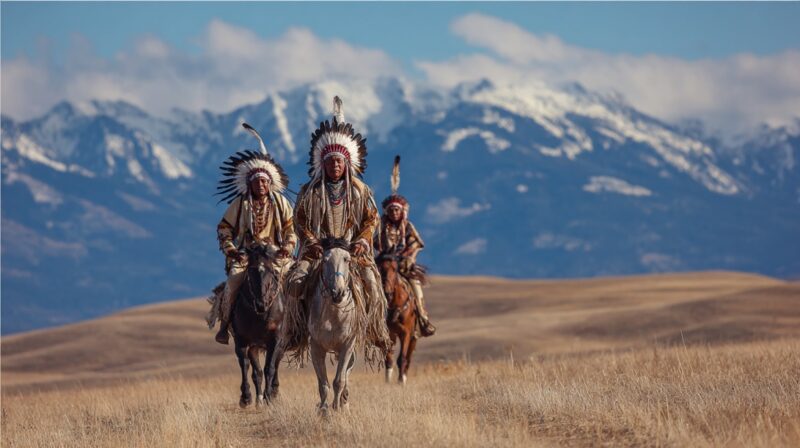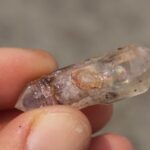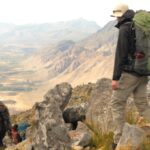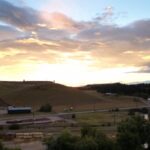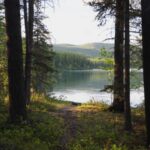Blackfeet Indian Reservation offers a meaningful cultural experience paired with remarkable natural surroundings. Respect and cultural awareness are essential when visiting.
The reservation borders Glacier National Park and Alberta, Canada, providing both accessibility and striking scenery for those interested in Indigenous traditions and outdoor discovery.
Key Attractions
Blackfeet Indian Reservation offers more than scenic drives and outdoor adventure. Visitors encounter meaningful cultural connections, historical knowledge, and spiritual significance at every turn.
From museums and artisan shops to sacred peaks and guided experiences, each place contributes to the legacy and modern life of the Blackfeet Nation.
Attractions fall into several categories: cultural and historical sites, entertainment and leisure, natural features, and places of community gathering.
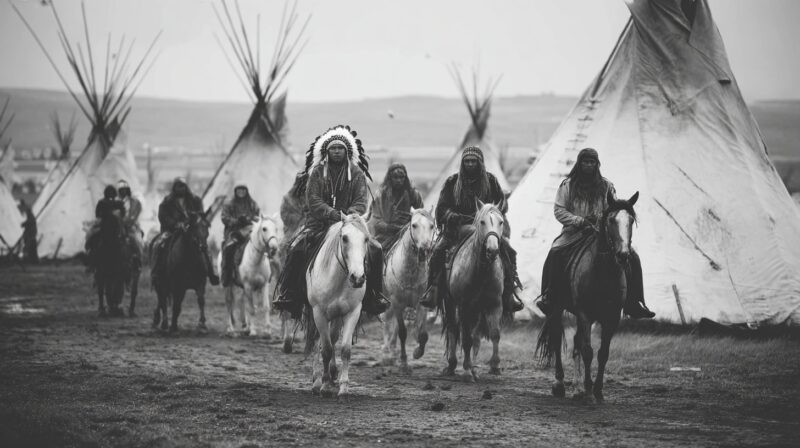
Cultural & Historical Sites
Cultural heritage runs deep throughout the reservation. Those interested in the arts, traditions, and stories of the Blackfeet Nation find multiple institutions that preserve and share this heritage with visitors.
- Museum of the Plains Indians – Features artifacts used by Plains tribes with a focus on the Blackfeet. Clothing, horse gear, ceremonial items, and historical photographs offer context for the tribe’s long-standing customs.
- Pikuni Gift Shop – Sells authentic items such as handcrafted jewelry, traditional crafts, and paintings by local artists. Purchases help sustain cultural preservation through direct community support.
Each site is more than a tourist stop; it serves as a living archive curated by members of the tribe. Conversations with artists or museum staff often provide deeper perspectives into historical events and modern life.
Entertainment & Leisure
Leisure on the reservation comes with a cultural twist. Some attractions are built for fun, while others include storytelling and education alongside recreation. Visitors looking for relaxation, entertainment, or social connection will find several options.
- Glacier Peaks Casino – Offers slot machines, dining, and live events. It also serves as a community hub for locals and visitors alike.
- White Buffalo Adventure Tours – Tribal members lead tours into culturally significant areas and natural sites. Guides often share personal insights, oral histories, and ecological information passed down through generations.
These experiences create space for enjoyment while also connecting guests with cultural stories not found in guidebooks. Planning in advance is advised, especially during high-traffic seasons or festival weekends.
Natural Landmarks
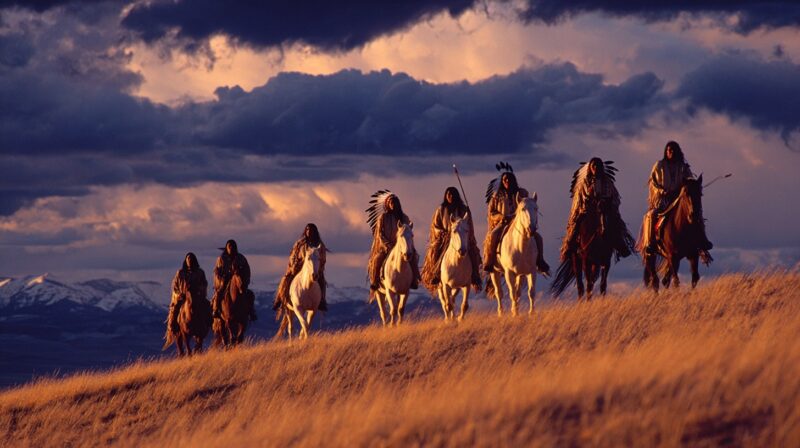
Natural features carry sacred meaning and visual power throughout the Blackfeet Reservation.
Many sites are used for ceremonies, reflection, and gathering. Visitors are encouraged to approach them with quiet respect and curiosity.
- Chief Mountain – Towering at over 9,000 feet, this peak holds spiritual significance. It’s visible for miles and often photographed by those traveling nearby.
- Glacier National Park proximity – Located directly on the western edge of the reservation, this park enhances scenic access for travelers. The juxtaposition of mountain ranges and grasslands creates a dramatic experience.
- Scenic Drives – Highways 89 and 2 offer panoramic views, with frequent pullouts for photo opportunities and interpretive signs that detail tribal history and land use.
Visitors should note that some areas require tribal permits or have restrictions based on cultural activity. Signs and local advice help maintain respectful boundaries.
Outdoor Activities
Recreational options throughout Blackfeet land appeal to those who love wide-open spaces and unfiltered nature. Every season brings fresh activities for those seeking solitude, movement, or exploration.
Outdoor opportunities include:
| Activity | Description |
|---|---|
| Hiking | Trails range from easy loops to strenuous alpine routes, many of which follow historical Blackfeet paths. |
| Fishing | Lakes and streams hold trout, whitefish, and more. Local permits are required for fishing access. |
| Boating and Canoeing | Varying water access across sites allows paddling on clear lakes with scenic views and wildlife sightings. |
| Hunting | Seasonal hunting is available with tribal permits. Regulations depend on species and season. |
| Camping | Blackfeet Tribal Campgrounds offer tent and RV sites near Duck Lake and Two Medicine with basic amenities. |
Annual Events & Cultural Experiences
Seasonal events reveal the pulse of Blackfeet life and welcome outsiders to respectfully witness traditions passed through time.
Music, dance, and gathering play central roles in summer celebrations, where local and visiting tribes unite.
- North American Indian Days (July) – Held in Browning, this multi-day event features traditional dancing, drumming competitions, a parade, and social gatherings. It’s one of the most well-attended powwows in the region.
- Heart Butte Indian Days (August) – A smaller celebration in a more rural setting, offering a chance to observe tribal customs up close with fewer crowds.
Visitor tips:
- Book lodging early, especially for July events.
- Ask permission before taking photos.
- Dress respectfully and follow posted etiquette.
- Watch for vendor stalls with traditional food and crafts.
Attending these events can provide a meaningful look at Blackfeet ceremony, dance, and intergenerational pride. Guests should remain aware of their role as observers and treat sacred moments with reverence.
Planning Your Visit
Preparing for a visit to the Blackfeet Indian Reservation requires more than packing gear and booking a room. Timing, transportation, and awareness of local protocols all play a role in creating a respectful and seamless experience.
Guests who plan ahead often find themselves better equipped to enjoy cultural events, navigate the terrain, and engage with local communities without disruption.
- Late June to Early September – Warm weather supports outdoor activity, and major cultural events are in full swing.
- Autumn (Mid-September to Early October) – Cooler temperatures and golden fall colors bring a peaceful atmosphere, especially for hiking and photography.
Getting there:
- Highway 2 and Highway 89 are the main routes into Browning and nearby areas. Both offer scenic views and access to cultural stops.
- Car rentals are widely available in surrounding towns or airports like Great Falls and Kalispell. Four-wheel drive is optional but helpful for certain routes.
- EV charging stations exist in towns like Cut Bank and East Glacier, but availability on tribal land remains limited.
Lodging choices include:
- Hotels in Browning such as Glacier Peaks Hotel
- Cabins and vacation rentals near lakes and forest edges
- Lodges positioned near Glacier National Park, some operated by tribal members
About the Blackfeet Nation
@nativeamerican.history The influential Blackfeet Tribe. Native American Native Americans Native American History History of Native American Native American Tribes Native American nations Native American culture Native American heritage #nativeamericans #nativeamericanhistory #nativeamericanpride #nativeamericanheritage #nativeamericanpeople #nativeamericantok #americanindian #americanindians #blackfeet #blackfeetnation #blackfeettribe #blackfeetpride ♬ original sound – NativeAmerican
The Blackfeet Indian Reservation spans over 1.5 million acres in northwestern Montana and serves as the homeland of the Blackfeet Nation, one of the state’s largest and most resilient tribes by population.
Generations of Blackfeet have lived on this land, adapting through political shifts, ecological changes, and economic transformations while maintaining a powerful sense of identity and continuity.
- Elevation range: 3,400 ft near Browning to over 9,000 ft at Chief Mountain
- Borders: Glacier National Park to the west and Alberta, Canada to the north
- Major towns: Browning (tribal headquarters), Heart Butte, and East Glacier
Cultural continuity:
- Oral histories, traditional dances, and spiritual beliefs remain present in everyday life.
- Tribal members practice beadwork, hide tanning, and regalia-making using traditional techniques passed through generations.
- Blackfeet language revival programs work to preserve fluent speakers and promote use among youth.
Government structure includes elected officials, tribal law enforcement, and regulatory systems that reflect a blend of traditional leadership values and modern governance.
The Blackfeet Tribal Business Council governs decisions related to land use, tourism, economic development, and cultural protection.
Visitors engaging with Blackfeet territory are entering a living, breathing community, not a static historical site.
Awareness of tribal sovereignty and local customs helps foster respectful interactions, and most locals are willing to share their knowledge with those who ask sincerely.
The Bottom Line
A visit to the Blackfeet Indian Reservation brings a sense of connection with an Indigenous community deeply rooted in heritage, nature, and modern expression.
Hikers, cultural seekers, and respectful learners alike can find meaning in each experience, whether through ceremony, museum visits, or panoramic vistas.
With mindful planning, the visit becomes more than a trip; it becomes an encounter with living tradition.
Hello, my name is Harper Barton. The only thing I love more than travelling is writing about it. Sounds strange doesn’t it? But yeah, I adore writing and sharing my experiences about what I have experienced during my travels. Since I am a person who loves being a part of the community, I often write about local festivals with the goal of popularizing outside just small communities they come from.

